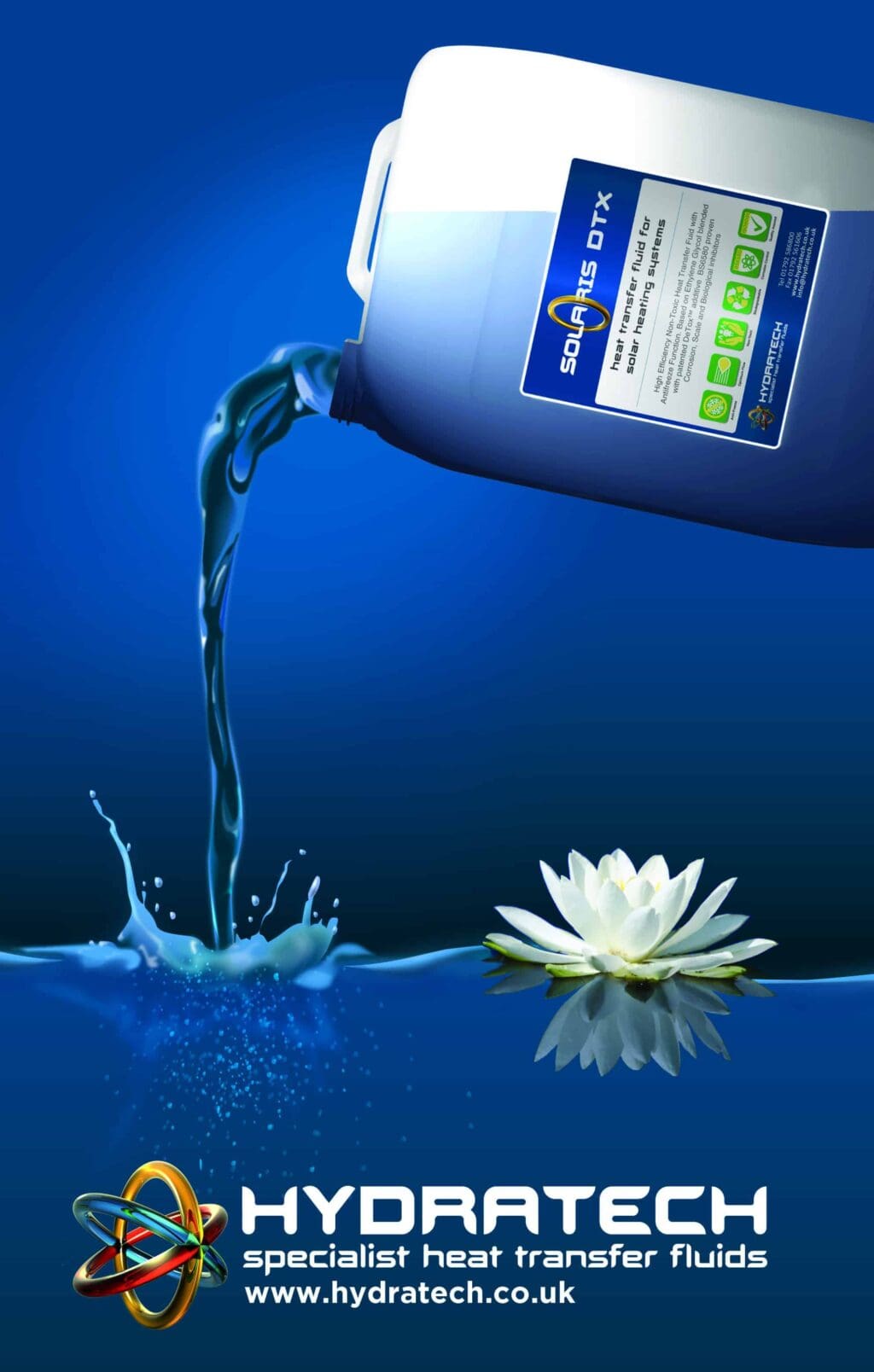In solar systems significantly higher demands are made of the fluid compared to geothermal and air source. Stagnation and boil-off within solar panels exert tremendous thermal stress on the fluid.
Fluid life can be maximised through good system design, facilitating rapid evacuation of the panel during stagnation, and the use of Reversibly Evaporisible Inhibitors (REI).
Non-RE inhibitors distil from the fluid and get baked onto the tube walls by the sun, leading to degradation of the fluid and corrosion of the system.
The most common antifreeze added to solar fluid formulations is propylene glycol (PG). Hydratech has been supplying Solaris PG Concentrate to solar panel manufacturers, merchants and installers for many years.
Solaris PGC contains a proprietary REI package and has proven exceptionally reliable in the field. An independent panel manufacturer carried out extensive trials using Solaris PG20 and Tyfocor LS (both ready-to-use solutions) and reported that Solaris PG20 proved more durable.
PG is not the only antifreeze that can be used in solar systems and more thermally efficient alternatives are available. The primary reason for selecting PG, until now, has been its low toxicity rating.
Following extensive toxicity tests by an EPA certified laboratory, Hydratech now manufacture DTX, an alternative non-toxic fluid.
The DTX range is based on the more thermally efficient ethylene glycol (EG), blended with the patented DeTox neutralising additive.
Solaris DTX also contains the same REI package as used in Solaris PGC.
EG based solar fluids are well proven, having been used for many years prior to PG gaining favour, due to toxicity concerns. There are no regulations preventing EG based fluids from being used in a Solar system and significant documentation exists to corroborate their use.
Fig.I provides useful comparison data for EG and PG based fluids.
To summarise, the benefits of Solaris DTX over PG based fluids are;
- More efficient heat transfer = heats up the hot water more quickly.
- Easier to pump, especially at low temperatures = reduced electrical demand.
- Less volume required to achieve the same freeze protection = cost reduction.
- Costs less per litre = even more cost reduction.
- Even lower toxicity.
Fig.I
(at 20OC) Boiling Point
@ Atmos Pressure
% v/v needed to provide
-20OC protection
Prandtl Number*
Dynamic
Viscosity
mm2/sec
Thermal Conductivity W/mK
100OC
n/a
7.0
1.0
0.6
>155OC neat
35%
20 at 35%
2.2 at 35%
0.45 at 35%
>150OC neat
40%
41 at 40%
4.5 at 40%
0.39 at 40%
>155OC neat
39%
40 at 39%
4.2 at 39%
0.40 at 39%
Fluid Versus Physical Data
Water
Solaris DTX
Solaris PGC
Propylene Glycol
*The Prandtl Number is a dimensionless number that is calculated using a fluids density, specific heat, thermal conductivity and viscosity. It provides a quick point of reference when comparing the overall heat transfer efficiency of a fluid. The lower the Prandlt Number the more efficient the fluid.

